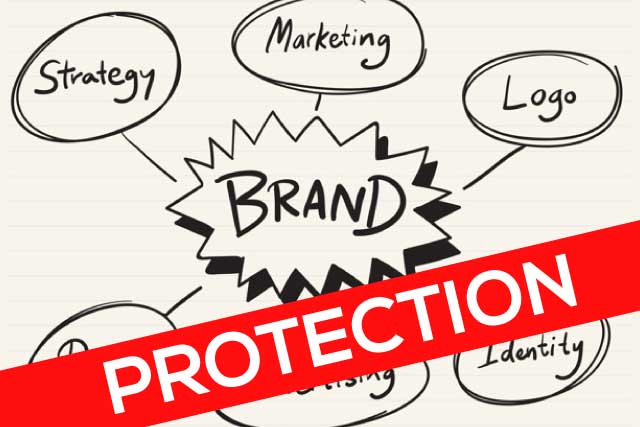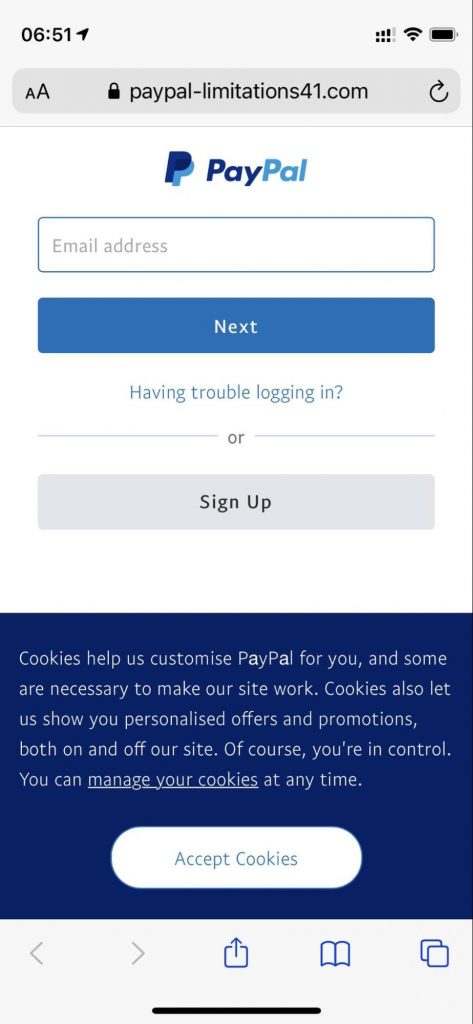What is digital brand protection?
Digital brand protection is the action of taking continual and proactive measures in monitoring and protecting a brand’s digital identity. The aim of such a process is to ensure that its reputation is not taken advantage of by ill-intentioned people in the digital landscape.
With the advancement of the Internet globally, many brands must now build a strong online presence to connect with their customers. Customers’ attention is now largely focused online and brands need to adapt and change their ways of doing business accordingly. There is a huge change in consumer behaviour, and any brands who fall behind will likely see their businesses affected.
Nowadays, various digital channels – websites, email, search engines, social media and mobile are all crucial for brands to engage with their customers. These channels are great for growing their business, increasing awareness and reach, increasing touchpoints with customers online, as well as building a strong digital presence. With all these coming in the picture, it is certain that new external threats to brands that cannot be ignored will arise, and owners need to make sure to take care of their digital brand identity.
Therefore, digital brand protection is essentially implementing brand protection steps for all digital activities performed. The reality is that digital activities will inevitably increase usage of multiple digital channels and as a result they bring increased external risks to a brand, including both good and bad exposures. Hence, it is advisable for every brand to make sure that internally they have someone who is responsible for constantly performing digital brand protection operations. Brands have to react with high efficiency and equip themselves with skills to navigate the digital landscape and stay ahead of bad actors, especially those in the e-commerce space.

The importance of digital brand protection
1. Safeguard your brand name and reputation from frauds and impersonation
Brand name and reputation takes years and efforts to build, and they must be protected from online bad actors. As the legendary investor Warren Buffett stated, it takes 20 years to build a reputation and five minutes to ruin it. Your brand’s reputation works the same way as well.
Therefore, it is crucial that you perform due diligence in digital brand protection to safeguard your brand name and reputation. With a solid digital brand protection strategy in place, you can prevent online bad actors from using your brand name and reputation in fraudulent activities, or even impersonating your brand to scam users.
2. Prevent loss of customer trust and financial loss
As a continuation of the impact above, loss of brand reputation will then cause the loss of customer trust and eventually financial loss as well. Bad actors use your brand to steal from your customers and deceit them, causing a ripple effect whereby customers will be more alert in dealing with your brand, or even altogether stop doing business with you. Not to mention, business that is supposedly yours have been diverted away from you by impersonating your brand, causing a loss of revenue due to online counterfeiting and piracy.
Therefore, digital brand protection is an extremely important remediation plan that must be set in place for your brand to prevent all these losses.
3. Protect a brand’s intellectual property and online presence efforts
Bad actors are constantly taking advantage of brands by impersonating them in their digital activities. No industry is safe from this, including your brand. It is a serious issue because many bad actors now even go to the extent of making fully functional websites, as well as using authentic-looking emails to imitate brands with unbelievable accuracy. They hijack brands of their content and imagery, intellectual property, and use very similar URLs to steal website traffic from the brands, undermining all their efforts in building an online presence.
Therefore, brands are advisable to engage in digital brand protection activities, as well as to put in place strategies to handle situations such as those aforementioned, should they arise. You need a solid contingency plan to follow through if any external threats regarding your brand happen unfortunately.

The threats a brand faces digitally
Any brands which are not taking proactive measures in digital brand protection risk facing various types of threats by online bad actors. Here we outline some common threats:
1. Brand impersonation
We mentioned this previously, and now we outline here what kinds of impersonation might occur in your brand’s digital activities. To have an online presence means your brand has its own domain, website, email and various social media accounts. All of these are opportunities for bad actors to impersonate your brand to defraud or hijack.
The most common form of impersonating a brand is to use a spoof domain, whereby a bad actor uses a domain to look like your brand. It can be as simple as using similar typo which involves using your brand name or the more advance method of hosting content that mimics your brand’s content, as shown in the pictures below.

Image source: https://www.domaintools.com/resources/blog/up-to-your-gills-in-phishing-attacks-this-research-may-help
According to domaintools.com also, some common domain spoof tactics include:
- Extra added or left out letters in the domain, such as Yahooo[.]com, mozila[.]com
- Dashes in the domain name, such as Domain-tools[.]com
- The letters ‘rn’ disguised as an ‘m’, such as modem.com versus modern.com
- Reversed letters, such as Domiantools[.]com
- Plural or singular forms of the domain, such as Domaintool[.]com

The aim of doing so is to trick users into believing that they are visiting a legitimate website to share their confidential information. We call these phishing websites, and any brand that has an online presence faces the domain impersonation threat.
Other notable impersonation methods that bad actors can also use include social media impersonation, CEO or key personnel impersonation, as well as mobile application impersonation.
2. Brand abuse
Bad actors can also abuse a brand’s name and reputation online through various methods, which are unauthorised by the brand owner or unknown to him/her. Some possibilities that bad actors can exploit through brand abuse include:
Unauthorised sales channel and grey market abuse
Bad actors take advantage of your brand’s reputation to sell your brand’s goods and services through sales channel unauthorised by you since the beginning. Or they exploit the difference in prices for the different markets of your brand, in terms of minimum retail price (MRP) violations.
Counterfeit goods and services
Piracy is rampant online, and your brand risks being used without permission in the trading of fake goods and services, which will harm your brand’s reputation and credibility. Bad actors abuse your brand’s copyright, trademark and intellectual property. For example, they use your brand logo, content and identity to deceive users.
Domain and cybersquatting
Your brand also faces the threat of domain abuse and cybersquatting online, whereby bad actors register your brand using any of the various top-level domains. They use the domains for cybersquatting and demand a payment from you, or they threaten to impersonate your brand to perform phishing attacks as mentioned above.
Malware distribution, PPC advertisement hijacking and crypto-jacking
Bad actors also take advantage of your brand as a cover up for their illegal actions of distributing malware, ransomware, trojans, virus or doing crypto-jacking. They do so by taking control of your website, or making a highly similar website as yours. Then, they install executable files and scripts on your brand’s website or the fake website to infect all visitors who search for your brand.
In summary, these threats can happen to anyone and any brand at any time. If your brand does not have a proper digital brand protection in place, the implications are severe and it will lead to tarnished brand reputation, loss of customers’ trust and their business, and eventually financial loss. The headaches of solving digital brand threats are very daunting and costly. Do make sure to perform digital brand protection actions beforehand, and make sure that all these do not happen to your brand(s).

Who needs digital brand protection?
The answer is definitely ANY company that has an online presence. Digital brand is part of the core assets of a brand now, as long as you conduct any forms of digital activities for your business. Make sure to start taking actions for your digital brand protection. Here are some steps you can start thinking about:
- Proactive global domain registration service
- Phishing, brand abuse protection & take down service
- Protection from “domain hijacking” lock
- Domain portfolio management
- SSL portfolio management
- Online digital reputation management
- Domain brokerage & escrow service
- Domain audit
- Personal data WHOIS protection
Digital brand protection is of utmost importance now in this digital era. Not only does brand protection matter a lot in the real world, but it also matters a lot in the digital landscape. Do not allow your brand reputation to be exploited by ill-intentioned players! It takes years to grow your reputation, so why let bad players destroy it? The good news is, we also offer digital brand protection service. Protect your brand’s online reputation by letting us do all the heavy lifting for you. Contact us to learn more.
About WebNIC
WebNIC is an accredited registrar by ICANN and various countries including Asia, Europe, America, Australasia, and Africa. With offices in Singapore, Kuala Lumpur, Beijing, Taipei and Jakarta, we serve 5,000+ active resellers in over 70 countries. To join us and become a reseller, live chat with us or email us at inquiry@webnic.cc.

